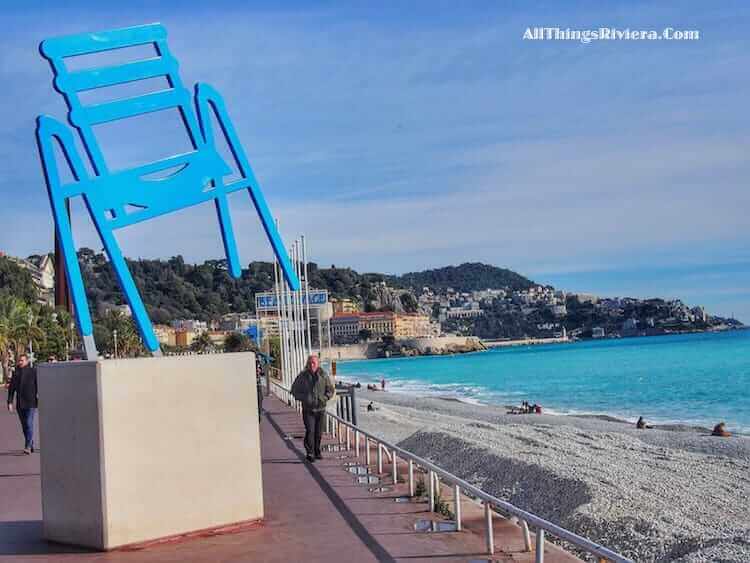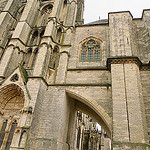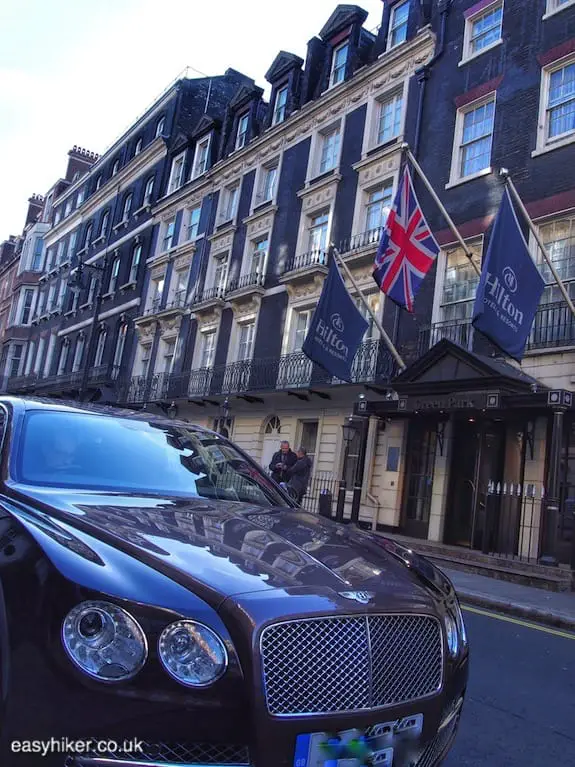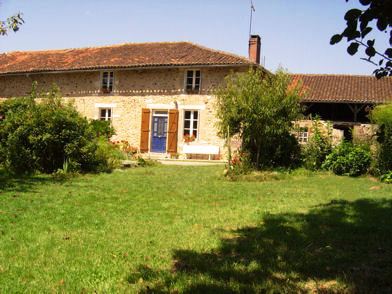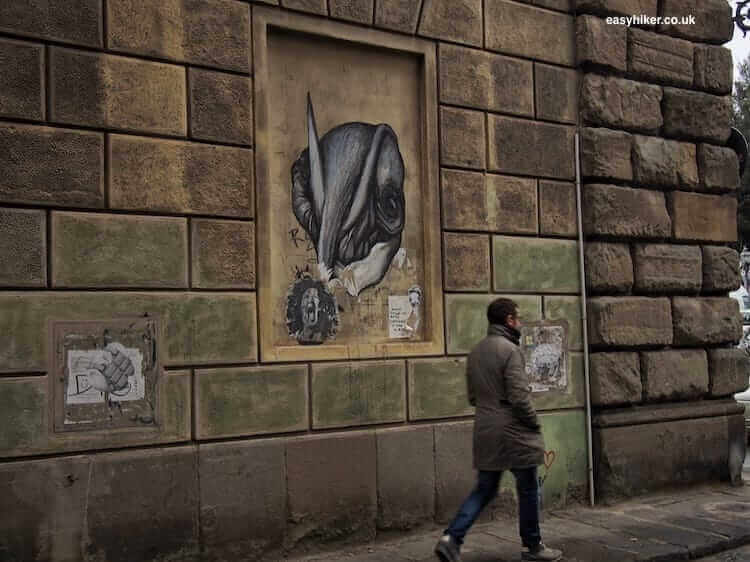Having walked into Monaco two weeks ago, today we will take you on another legendary French Riviera Walk: a stroll in Nice down the Promenade des Anglais from where it starts, once around the Baie des Anges past fancy bars and hotels, rows of palm trees and some of the best Mediterranean seascapes of the entire coast.
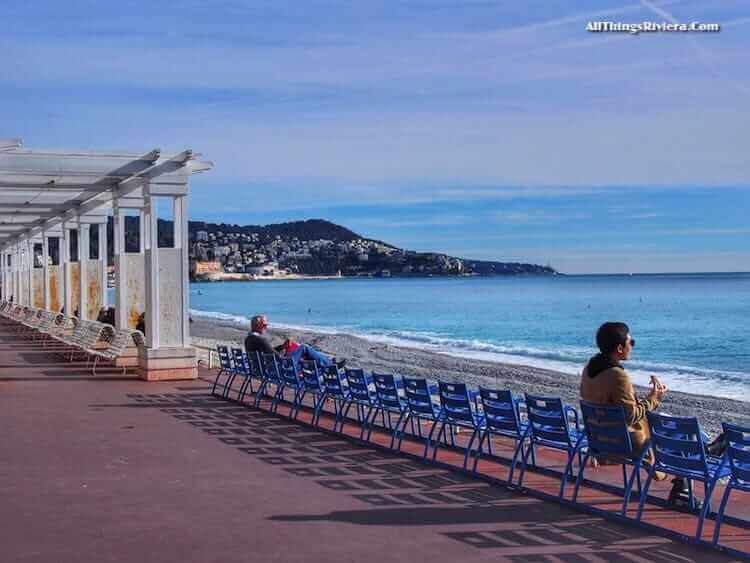
The view may have changed little in the nearly 200-year long history of the French Riviera’s most famous street, but everything else has.
One can argue how “French” the lands on the left bank of the River Var (the old frontier between France and Italy) actually are. It is indisputable that at least this particular part of these lands fails to uphold the typically French respect for architectural tradition.
The story of the Prom is one of radical and ruthlessly performed changeovers, more Las Vegas than Paris. It is a story of fishing villages replaced by aristocratic palaces replaced by late 19th century hotels replaced by Art Deco casinos replaced by residences for well-to-do pensioners.
The Promenade des Anglais has always been a proud follower of the latest fashion trends, but what it has most doggedly followed throughout the centuries is the whiff of a fast buck.
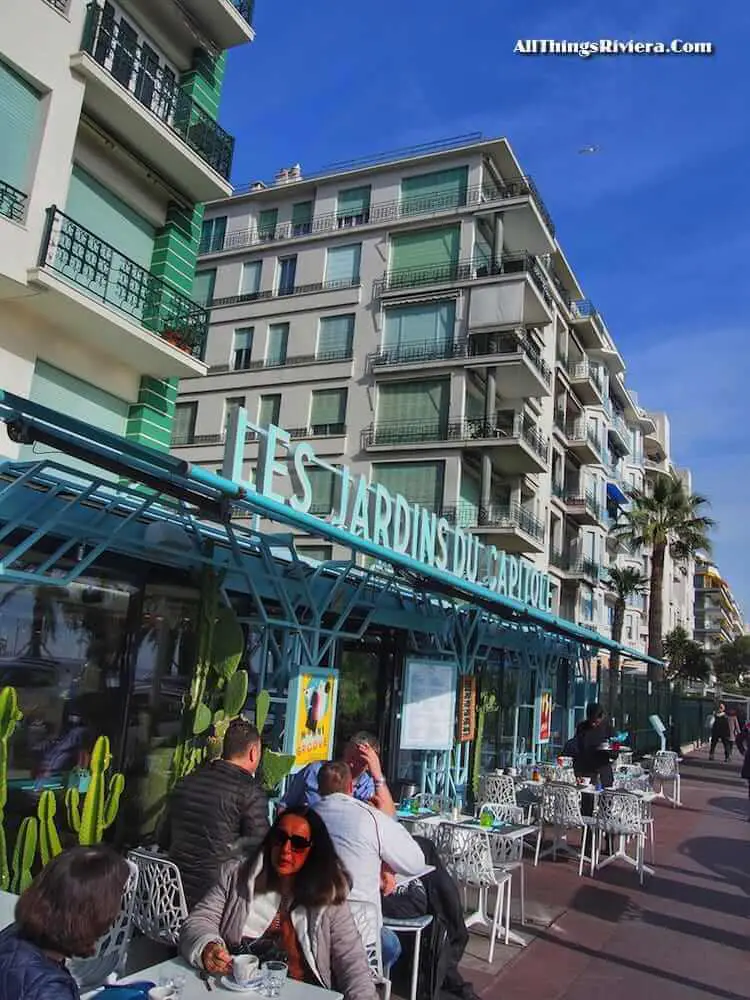
Our walk on the Promenade des Anglais from where it starts will be from the outskirts of Nice, near the airport (where the River Var flows into the Mediterranean).
Leave the train station of Nice St Augustin, turn left and walk down the busy main road (called Route de Grenoble) until you join the Promenade turning left.
Walking the Promenade des Anglais from where it starts
The history of the Prom goes back to 1824 when Nice’s substantial English community decided to finance a seaside walk: originally a foot path, two metres wide and half a mile long.
Over the years, this foot path was gradually extended (the last stretch down to the River was completed in 1903) and widened – in the 1970s, much of the Prom was a motorway with up to six lanes for car traffic alone.
In 2007, however, this traffic was rerouted, and the current concept of a Promenade for flaneurs took shape.
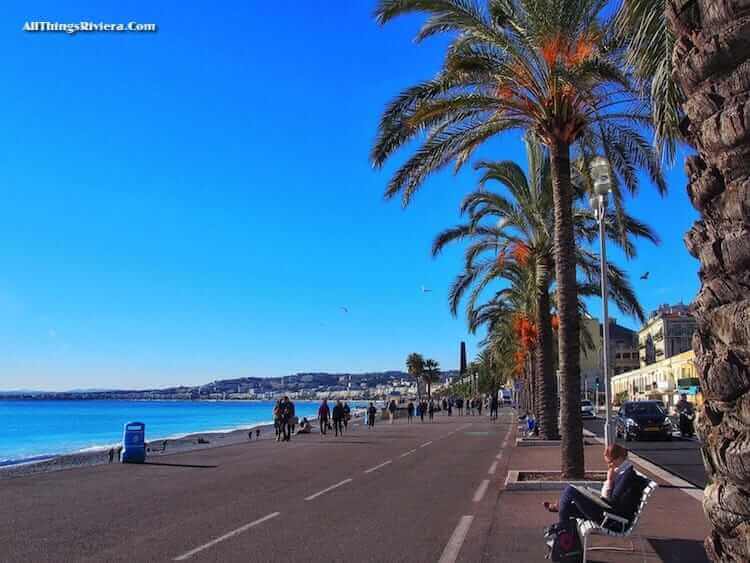
The western sections of the Prom were only developed in the years following WWI. One of the era’s prominent residents was American dancer Isadora Duncan who opened a dancing school in the neighbourhood and who lived in a flat in the Bella Vista hotel on 239 Promenade des Anglais.
Not only did Ms Duncan dance and live on the Prom: she also died there (in 1927) when she was choked by her shawl which had been caught in the wheels of her motor car.
The Bella Vista Hotel has since been demolished and replaced by a cookie-cutter modern building. Fortunately, many period buildings still provide a flavour of the 1920s Prom.
Remember that these were wild days, with few generally accepted rules and standards for performing artists as well as for architects.
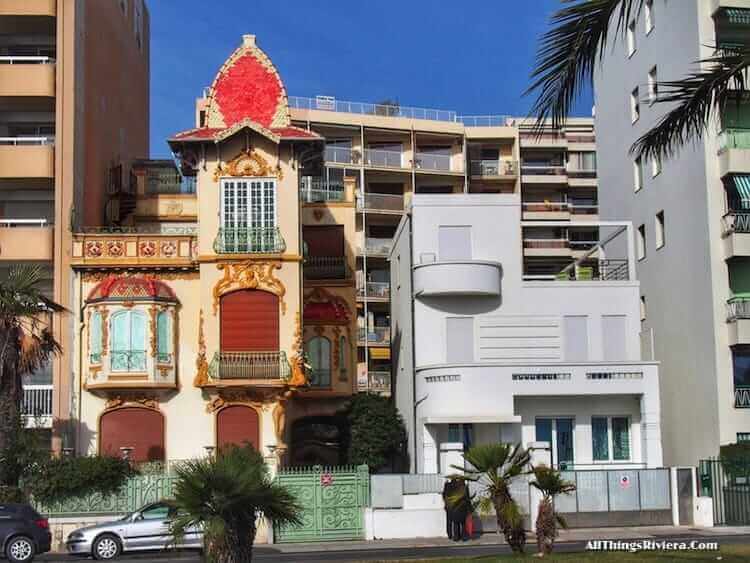
A little further down, you will find the Fondation Lenval, established in 1888 as a charity (by a recently bereaved father, the Baron de Lenval) with 10 beds. It has since grown to become one of the world’s leading children’s hospitals.
This is where Angelina Jolie gave birth to her twins in 2008 – in a 4-bedroom suite on the 6th floor at the far corner of the building.
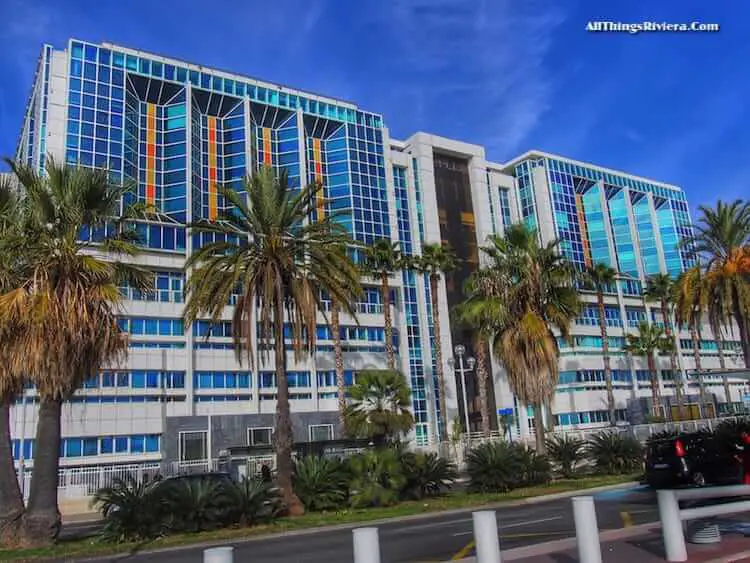
The darkest hour in the long history of the Promenade occurred in the late evening of 14 July 2016. It was here on Rue Lenval, the small side street just before the hospital, where a terrorist drove his truck into the street on which the celebrations for the French National Holiday were in full swing.
He broke through a police barrier at Avenue Gambetta, steered the truck onto the sidewalk and was eventually shot by police officers in front of the Palais Mediterranee. The carnage lasted for less than 5 minutes, but claimed the lives of 86 people.
The Prom was completed in several stages, but perhaps the most important project in its history was the 1844 extension – up to the level of Rue Honoré Sauvan – which gave the street its present look (the palm trees) and width of 8 metres.
It was still a red dirt road, however. The French writer Alphonse Karr – coming here from Paris – joked that “on the coast of a Mediterranean sea of water, one takes a promenade in an ocean of dust”.
Only two aristocratic palaces have survived to this day: firstly, the villa Furtado-Heine (on the corner of Rue Sauvan), which was constructed in 1787 and is the oldest building on the block.
It owes its present shape to Cecile Furtado-Heine, whose husband (Charles Heine) had been the son of the famously rich banker Salomon Heine (called the “Rothschild of Hamburg“) and a cousin of Heinrich Heine, the famous German poet and wit.
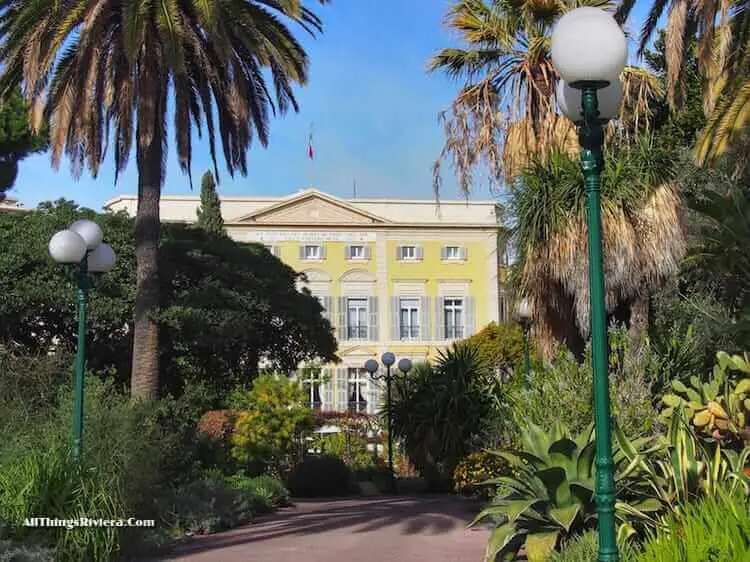
The villa was converted into a rehab home for officers of France’s colonial wars in 1895 and is still owned by the French Defence Ministry.
One block further, you will find the Palais Massena, the last great aristocratic villa built on the Prom when it replaced an older, even more aristocratic mansion (the residence of the Czarevich Nicholas who eventually died in Nice) in 1900.
Incidentally, it was also built with money owned by Cecile Furtado-Heine although not for herself but for her son-in-law, the grandly titled Duke of Rivoli, in fact a grandson of Victor Massena, one of Napoleon’s generals.
The building became municipal property when somebody down the line could not pay his inheritance tax and is now a museum.
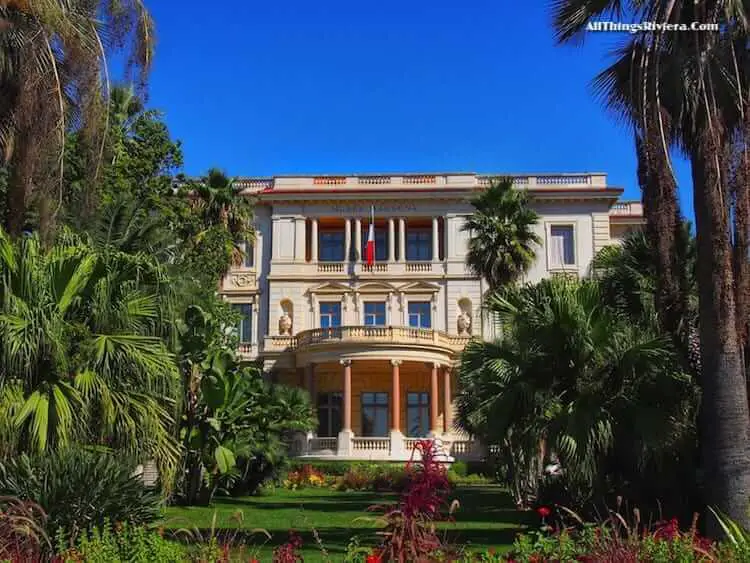
Opposite, you will already have spotted the most famous building from the period that followed the Prom’s “Age of Aristocracy“.
This is the Hotel Negresco, a symbol for the Riviera’s pre-WWI “Long Edwardian Summer“ of cavaliers in their horse-drawn landaus and ladies promenading with their parasols under hedges of bougainvillae and oleander.
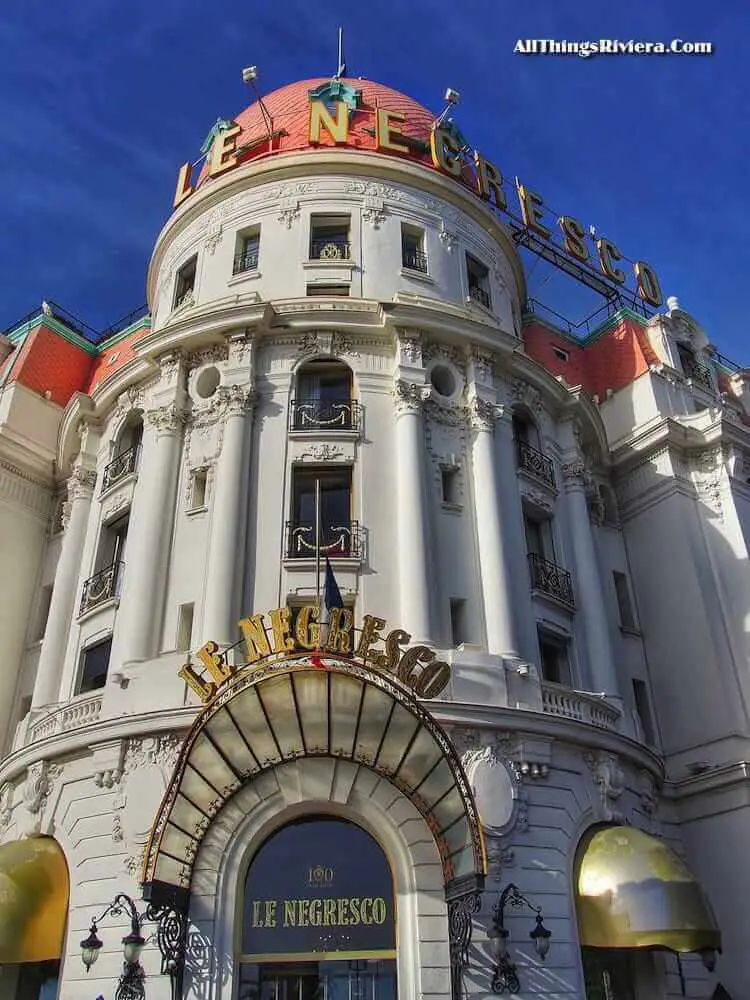
In reality, the Negresco was only completed in 1912, a mere two years before WWI ended the Prom’s first Golden Age and ruined the hotel’s proprietor (Henri Negresco).
For most of its history (since 1957), the hotel was owned by the legendary Jeanne Augier who is said to have told Bill Gates that purchasing the Negresco would be “beyond his means”. Mme. Augier died in January 2019, two months short of her 96th birthday.
Most of the once famous buildings that used to line this section of the Prom have been demolished: former homes of the King of Bavaria, Queen Isabella of Spain, dowager Czarina Alexandra Feodorovna and so on.
Nice was the number one playground for members of the high European aristocracy, particularly for those considered unsuitable for high office and/or slightly past their sell-by date.
In the second half of the 19th century, nearly all of these palaces made way for new hotels. Two aristocratic villas were knocked down in 1880 to create space for the Hotel Westminster …
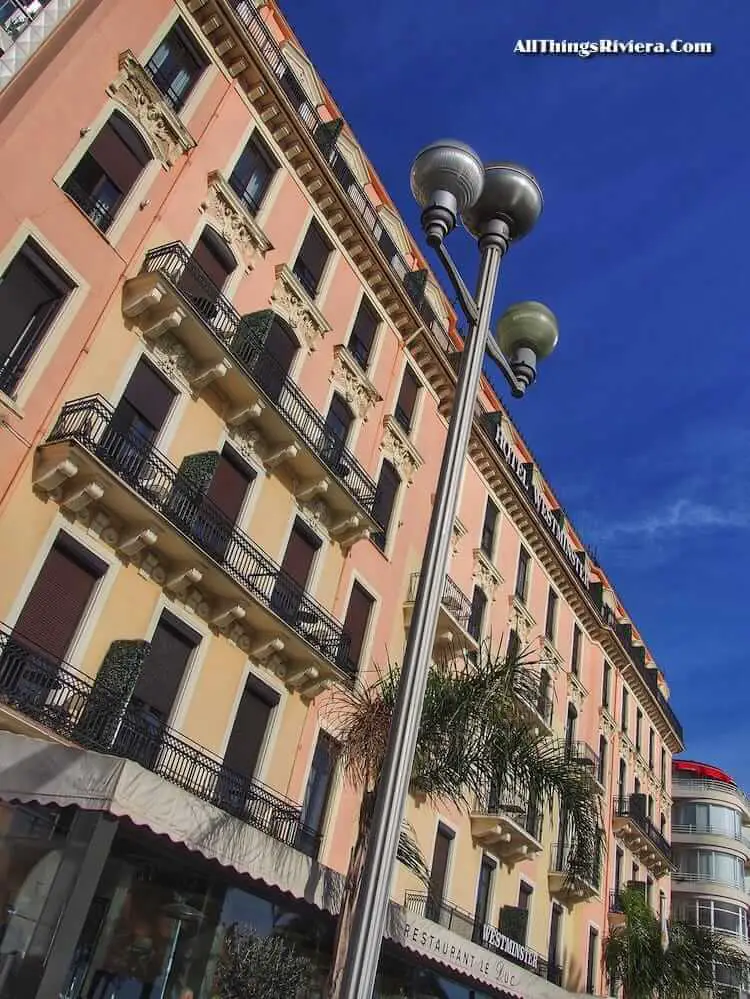
… itself now one of the last survivors of this period.
Because when the visitors returned to Nice after the end of WWI in the Roaring Twenties, the city turned from an elegant winter retreat for aristocrats and the “haute bourgeoisie“ into a loud and brash summer resort for the Scott Fitzgerald generation.
These were the crazy days of the Cote d’Azur, and the spirit of this age found its best architectural expression in the Palais Méditerranée.
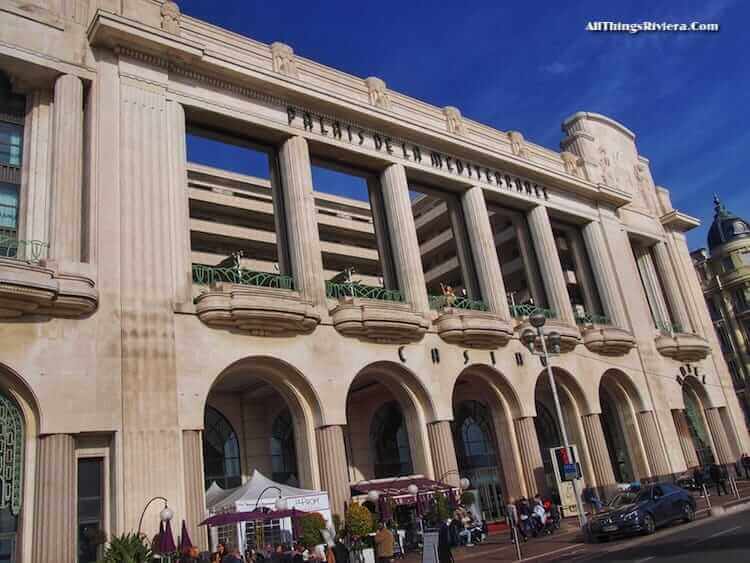
The Palais was the third largest casino of the period: completed in 1929 (the year of the Wall Street Crash: another example for poor timing), it rivalled the existing Casino Municipal and the Jetée-Promenade.
All three have since been razed – yes: even the Palais Mediterranee, of which only the original facade remains. It had been the intention of the 1970s investors – who had acquired the building following the mysterious and never entirely resolved death of heiress Agnes LeRoux (rumours about organized crime involvement swirl around until this very day) – to raze the building completely. This, however, was something that was prevented after citizens’ protests and the intervention of the national Minister of Culture, Jack Lang.
So what happened to the other two casinos? The Municipal one once stood where the Nice ferris wheel now stands …
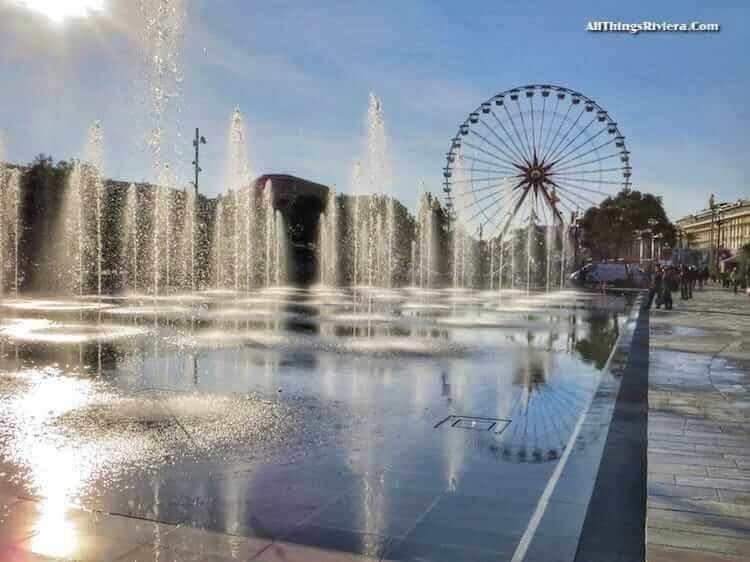
… and was torn down to make way for the Acropolis Congress Centre, one of the three things which established the fame of Mayor Jacques Medecin. The other two: running away to Uruguay to escape a police inquiry into his affairs and writing what is still the definitive book on the cuisine nicoise).
The Congress Centre was eventually built elsewhere, a few hundred meters up the Paillon Gardens.
The Jetée-Promenade, meanwhile, a “floating pier of glass” constructed by the architect of London’s famous Crystal Palace, stood opposite the gardens Albert 1er and the Hotel Ruhl until 1944, when it was stripped by the city’s German occupiers to pay for the Nazi war effort.
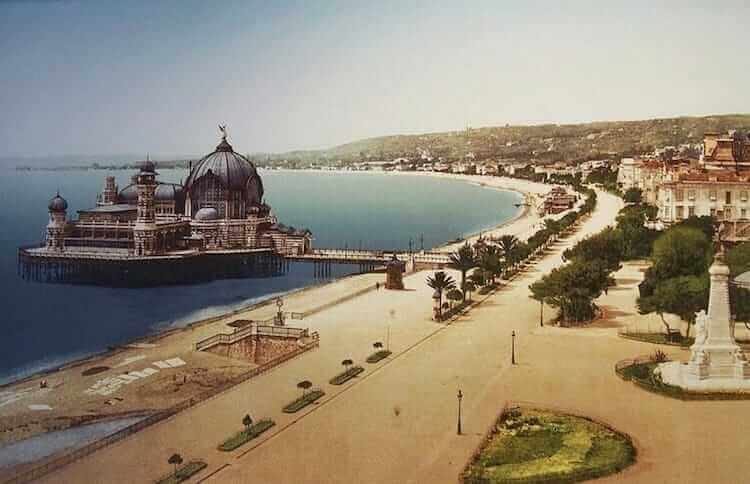
Oh, and the Hotel Ruhl? That was also destroyed, in 1979. Only the name of the hotel beach remains: a distant echo of past glories.
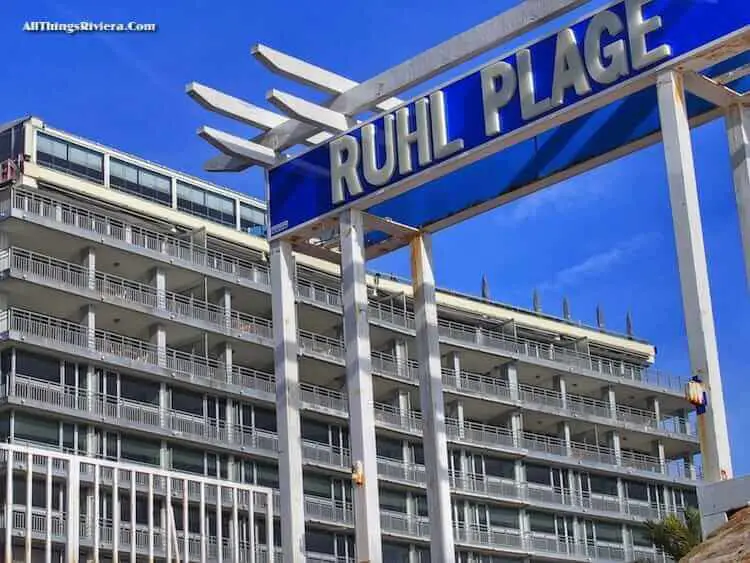
This is where the Promenade des Anglais ends.
Its continuation – down the southern edge of the Old Town – is called the Quai des Etats Unis. To the casual observer, this is a mere change of name: a barely perceptible and wilful distinction, but the distinction has deep roots in the city’s history.
We will return some other day to elaborate on this and to continue the walk along the Baie des Anges all the way to the port.
But for today, we shall just enjoy the view.
